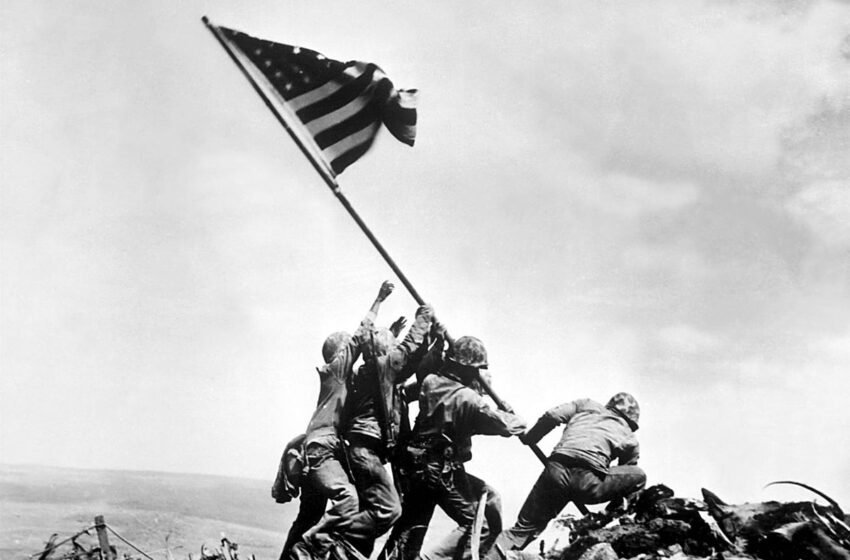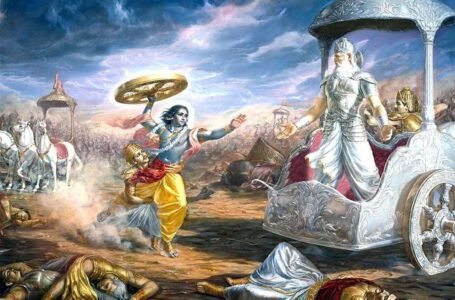The War That Never Ended: Generational Trauma of WWII

-Mili Joshi
The end of World War II in the year 1945 was only ushering in what amounts to an indefinite continuation of the war for millions of people around the world due to the psychological and emotional scars left by the conflict well after fighting ended and treaties took place.
While governments moved forward with peace agreements, the reconstruction of cities and celebrations of victory, these deeper wounds continued to linger on through families and societies by subtle but profound ways: relentless bombings, genocidal atrocities, and forced separations.
Rather than fade with the pomp of parades or promises for a new era, the war’s trauma silently seeped into the everyday lives of its survivors-embedding itself in memories-behaviors-adaptive styles. And it was transferred silently to their children and grandchildren in the form of bequeathed fears, fragmented storylines, and emotional motifs, leaving a legacy of one of the worst chapters in human history.
A World Torn Apart
The period between 1939 and 1945 saw unparalleled destruction and misery inflicted upon the earth, where nations were at war, cities lay in ruins, and whole populations became victims of a war that did not spare one continent. An annihilation machinery giving Nazi Germany might one day turn its sights upon even an industrialized campaign of genocide whose architecture included the systematic targeting and extermination of whole communities, whereas imperial dreams of Japan would witness widespread occupancies across Asia, culminating in an inability to quantify devastation when atomic bombs closing in on Nagasaki and Hiroshima brought this conflict to an icy end.
Somewhere between seventy and eighty-five million human lives, including soldiers, civilians, and children, had disappeared by the time the last bullets were fired and the smoke of the war cleared. Millions more were displaced, orphaned, or forced to live in a shattered world where the pillars of their homes had been reduced to rubble and hope buried in the layers of grief. For the very few people who survived, reestablishing themselves into some reasonable form of life was a far cry from easy. While these survivors worked hard at reconstructing a physical world and restoring a functional order, they brought inside of themselves wounds with such deep psychological dimensions that they could neither be detected with the naked eye nor discussed openly but were felt strongly, surfacing as torment in nightmares, or surfacing further through broken bonds and relationships, coming back to haunt all those weighed down by the unbearable burden of trauma that would remain long after their visible scars healed.
The Silence After the Storm
Many a soldier, many a prisoner of war or refugee, and many a Holocaust survivor found his or her way back home from the frontlines and camps only to face, in utter disarray, the helplessness of expression concerning the horrors that ensued before the eyes of the traumatized, or terrors faced in an uphill struggle for survival against relentless violence and dehumanization. At the time, the very concept of post-traumatic stress disorder was either dimly understood or outright rejected; as a consequence, these men and women were too often expected to stifle their pain, integrate into society without so much as a murmur, and express gratitude simply for having made it out with their lives. Many men returned from the war completely changed. Plagued by insomnia, they relived the nightmares of war in terrible flashes, sometimes waking in panic, drenched with sweat, hearing the familiar sounds of gunfire, the explosion of bombs, or the agonizing cries of dying comrades sounds that they could not shake long after they had left the battlefield. As peace was declared and the baby-boom generation was born into renewal, many children were reared in houses in which fear and sadness hovered just below the visible a plate dropped on the floor or a sudden sound could provoke an involuntary flinch, emotional closeness became estranged, and, only quiet, white liquor cabinets supplanted conversation.
Then children grew up, often unaware of the root of such ambient atmosphere; they absorbed their parents’ unresolved grief, inheriting the burden of a war they had never lived but whose psychological aftershocks still defined their homes.
The Families That Fell Apart
For some families, the closeness survived the tragedy that happened afterward, but many were just torn up from within in silence, as the emotional burdens resulting from the war proved too heavy to be carried together. They returned with post-war experiences that changed their relationship with their families, apart from developing many emotional distresses, such as addiction, outbursts of rage, and emotional distances in various households. These trained independent mothers found it all the more difficult to make their pain understood or share it with those family members who did not live through the experience they did. In many homes, the past was simply never spoken of – but silence carries its weight, and children often grew up with a persistent, unnamed sense of unease passed down through unspoken sorrow.
The Holocaust: Trauma Carried Forward
No other group demonstrates the ravages of generational trauma quite like the survivors of the Holocaust and their descendants. For them, the fear and terror wrought upon them in the Nazi camps did not cease with their liberation. Survivors were often left with families that did not exist to return to, homes to which they could not go back, and no means by which they could explain to their children why they sometimes would sit, staring at a wall for hours in silence. Children of Holocaust survivors grew up hearing fragments of a tattooed number on an arm glimpsed by sheer accident; a picture of the past hidden away in a drawer; sudden, uncontrollable tears one moment as a memory slipped through. Studies show descendants are often burdened with abnormal levels of stress and anxiety, hypervigilance carried through family customs, and as scientists suggest, even by genetic markers bearing the stamp of severe trauma.
Japan’s Nuclear Legacy
In Japan, the atomic bombings inflicted harm not just on the physical environment but also created psychological and social scars that have lingered in ageless devastation upon the generations. The hibakusha-the bomb survivors- suffered grievous injuries, illnesses, and trauma, but they also faced social stigma-which accompanied them through their lives. There was much fear that the exposure to radiation could damage the genetics of future generations, thus isolating members of their families in arranging marriages and seeking employment for their children. Japan was trying to overcome the shame of defeat, while the children of the hibakusha quietly carried the burden of their parents’ experiences and lived with the dreadful knowledge of how quickly life could be crushed. The past was never spoken of openly by many, yet the fears of being sick, deformed, and socially rejected stayed with them long after the mushroom clouds had disappeared from the sky.
Loss on the Home Front
Across Europe and Asia lives millions of families who were eerie ruin as their loved ones never returned from war. Some whole villages almost lost their whole young men. Their silence has echoed for generations. Whole neighborhoods would collapse in cities like London due to incessant bombings. Millions of women suddenly turned into widows, and thousands more had orphaned children, forced into a shady life with unimaginable loss. Absence becomes presence for those, of course, who in their lives grew up with the memory of a father they never knew, a brother buried in a grave far from home, or a mother dutifully searching the crowds hoping to find a long-lost face.
Displacement and New Roots
The formal end of the war did not translate into normalization of life, nor did it guarantee that all could simply go home. On the contrary, millions of refugees were forced across borders, often with nothing but hope and the clothes they were wearing, seeking safety and a sense of belonging in unfamiliar places. War brides women married to foreign soldiers left behind everything they knew and started lives in far-off countries, armed not merely with hopes for loved ones but heavy narratives of loss, cultural dislocation, and separation from everything they knew. Many of those children grew up in two worlds; one of local culture and the other shaped by the silent, inherited grief and identity of another land. Entire communities were uprooted from their home lands; only to be replaced by scattered families carrying fragments of language, memories, and traditions fragments that would continue to shape how future generations understood who they were and where they truly belonged.
The Cold War: A New Fear
When World War II ended, there were cheers from around the world and the people returned to bask in the glory of the new-peace; however, almost instantly, another fear replaced the one forged in blood a fear of global annihilation. Such was birthed the Cold War amid the destruction and lingering anxiety that Hiroshima-Nagasaki could repeat itself sometime soon; only that will be far worse, far-reaching, and far more terrifying. For a couple of decades, children in the United States and the Soviet Union are subjected to the constant specter of nuclear war practicing “duck-and-cover drills” in school hallways, all the while absorbing the perception of impending doom that their world could just cease to exist in an instance. On the other hand, because of wartime actions, Germany and Japan were imbued with a legacy tale of terrible shame and unresolved guilt; this legacy has formed the lens through which generations learned about history anonymously, in very hushed tones influencing as to whether families would talk through the unspeakable past or sit in silence.
Inheritance in the Blood
As nations were celebrating the well-deserved victory with the promise of peace, a new kind of anxiety began to settle in-these anxieties would shape the global consciousness for decades to come. The Cold War soon arose from the ashes of World War II, backed by the grim realization that the destruction met out on Hiroshima and Nagasaki could one day be replicated, but on a scale so grand that it would make the earlier destruction pale before it. In the United States and Soviet Union, a generation of schoolchildren grew up with the specter of nuclear war, doing drills in hallways-coldly conscious all along that their existence could be snuffed out in an instant. On the other hand, Germany and Japan had to grapple with a very different legacy of deep shame and historical reckoning, guilt for wartime atrocities weighing heavy upon them, shaping in myriad ways how succeeding generations learned about their country’s past. In many families, conversations about the war were sanitized or simply avoided, leaving the younger generation with fragmented tales and silenced inquiries regarding identity, history, and responsibility.
Art, Memory, and Healing
It is a process of healing that slowly unfolded for some families, if at all, through generations, but rarely within them. Some survivors took secrets to the grave, while others shared bits and pieces of memory and pain that later generations chose to piece together. In more recent decades, many have found the courage to break that silence and transform the inherited trauma into books, films, and works of art in order to honor the suffering endured, but also to send strong warnings into the present moment. Through Night by Elie Wiesel, Schindler’s List, and many personal memoirs and family histories, the story of concentration camps, bombings, and battlefields is kept alive in the public memory. These works, in giving voice to the once silenced and shamed, remind society that to forget is a dangerous-doing and quite often the first quiet step to repeat with heavy irony the very horrors that we vowed to never allow again.
The Never-Ending Story
Wars now ignite in places around the world, and they leave behind more than derelict cities. Their most glaring fallout mark a number of very deep scars in the most vulnerable lives. Children fleeing from modern war zones carry the traumas-dwellings of World War II survivors: the terror of bombings, the ache of hunger, and the heartbreak of families torn apart, refusing to forget. The years have moved on, but the most critical lesson weathered the test of time-it’s not over when the guns are silent or peace agreements are signed. The real battles follow in the quiet, inner struggle to foster healing, the secret wars fought within families, minds, memories-all which can go on for generations. By doing so, they silence much of the elements to which trauma clings, both through words and images as well as voices. Only through such remembrance can one enter the space of understanding, and, perhaps one day, of healing-and possibly, peace for all time.
Remembering So It Never Returns
World War II is perhaps one of the most tragic and long-lasting warnings in all history-a warning that such things happen when hatred runs wild, when power is abused, and when silence nourishes suffering in the dark. Its actual price is not counted solely in the millions of lives lost on battlegrounds or in camps but also in emotional and psychological wounds that have crossed generations-the unexplained narratives that shape lives long after the last bombs fell. To safeguard the future, we shall remember-not through history books or memorials but personal stories that imbibe life into memory. Thus, if your family holds a memory from that time, even a fragmentary one or one that brings pain, share it. Ask the questions, heed the silences between words, and say forth the truths that another generation might have been unable to voice. Because the world may not be finished making war, it is continuing to echo through bloodlines and memory, but every act of remembrance becomes, in its small way, an act of defiance-ensuring that those very same shadows do not rise again.


